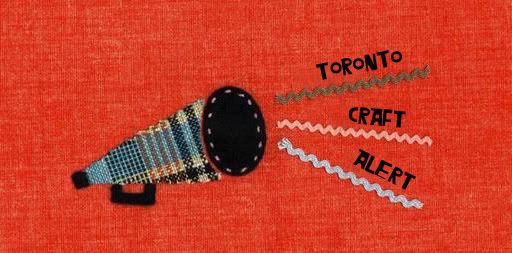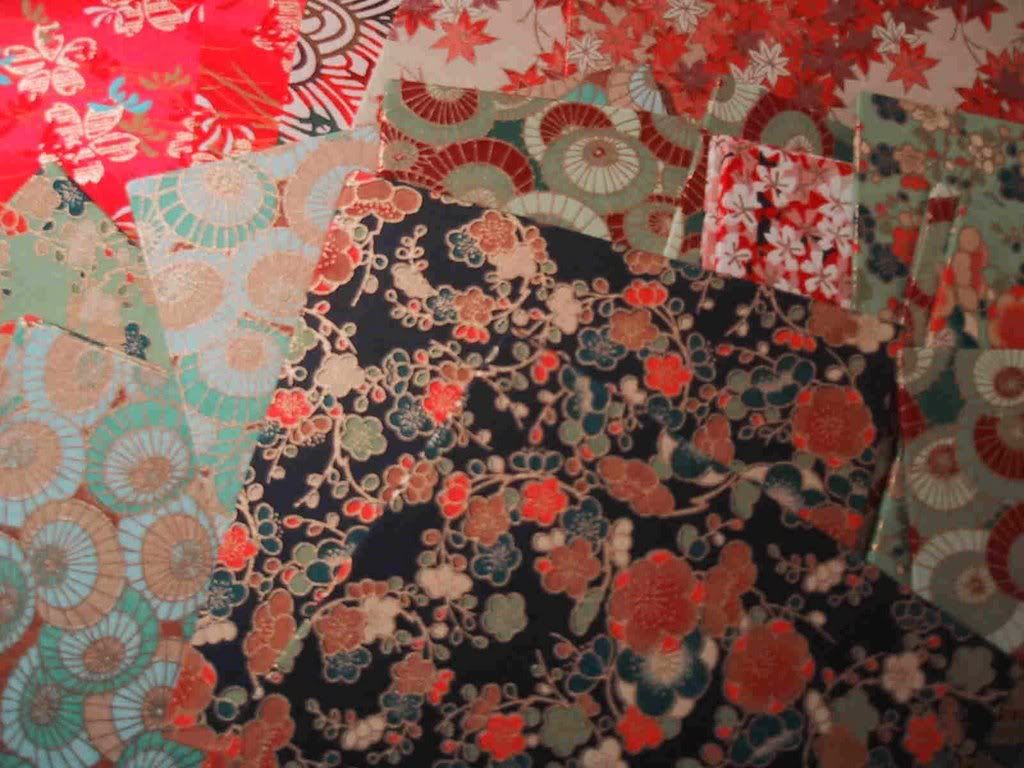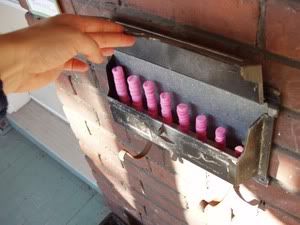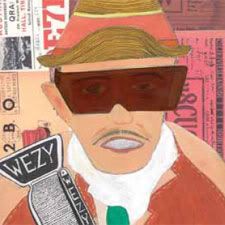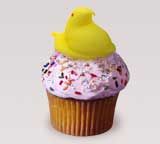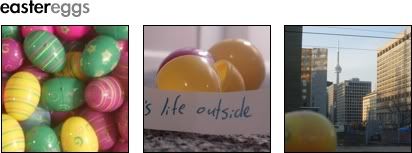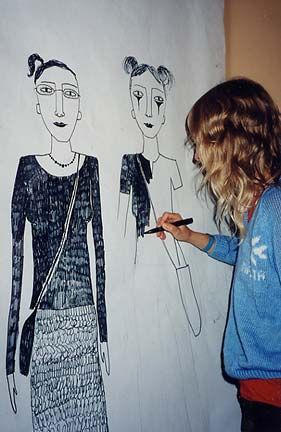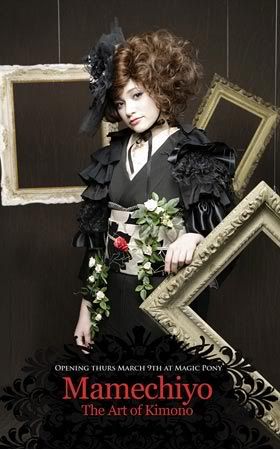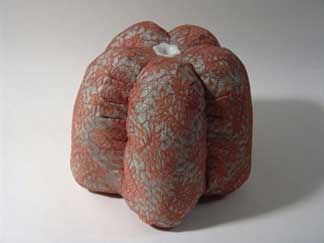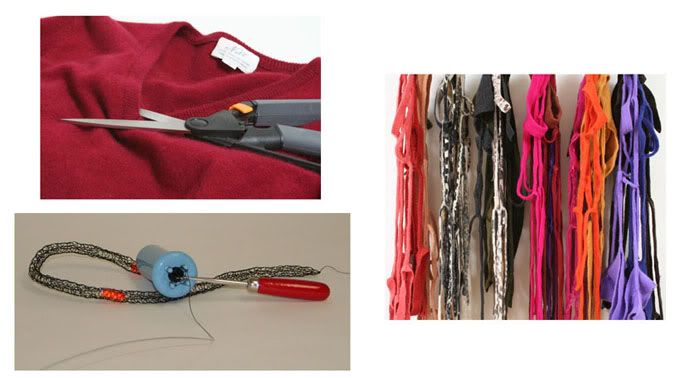MAKER PROFILE: arsenic and old lace - a chat with Shary Boyle
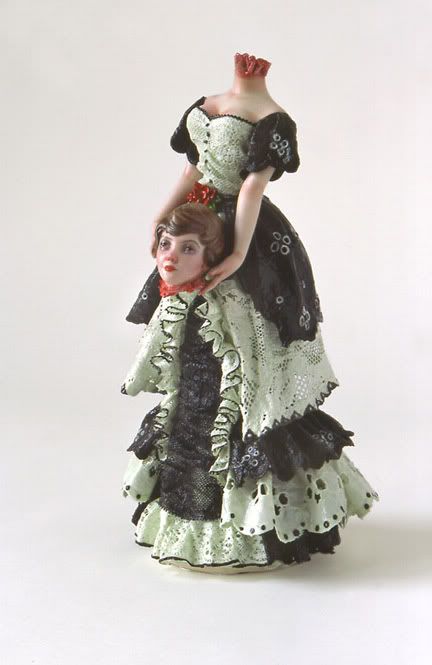 Shary was first exposed to lace draping several years ago, when she heard about a local legend of the suburbs of Seattle who taught classes in this technique. Vivian Hausel turned out to be the master of the form in the States, boasting a CV that includes instructional videos, cross-country workshop tours, and a business run out of her basement called “World of Porcelain”. Intrigued, Shary joined Hausel for a weekend workshop and was blown away by the deft hands and dynamicism of this 86-year old powerhouse in a purple pants suit.
Shary was first exposed to lace draping several years ago, when she heard about a local legend of the suburbs of Seattle who taught classes in this technique. Vivian Hausel turned out to be the master of the form in the States, boasting a CV that includes instructional videos, cross-country workshop tours, and a business run out of her basement called “World of Porcelain”. Intrigued, Shary joined Hausel for a weekend workshop and was blown away by the deft hands and dynamicism of this 86-year old powerhouse in a purple pants suit.It was in this first workshop that Shary saw the potential for working with figurines on a larger scale, and has subsequently attended basement and garage workshops in Winnipeg and Burlington. As lace draping is not such a hot craft in Canada, she had to resort to stalking craft stores and following up shaky leads to locate Canadian instructors and groups. Connecting with porcelain hobbyists has been essential to her progress, as she needs access to kilns as well as the rare vintage moulds that many of the women have been collecting since before the 50s and 60s.
Lace draping first registered on the radar of North American hobbyists in the 1940s as a result of an American couple’s post-war trip to Germany (a hotbed for porcelain figurines). The craft’s continued popularity among female hobbyists is an irony not lost on Shary, who explains that, “in the 18th century economics of Europe, porcelain was an exclusively white, masculine domain of artisans and monarchies, with a product produced for the privileged upper class”.
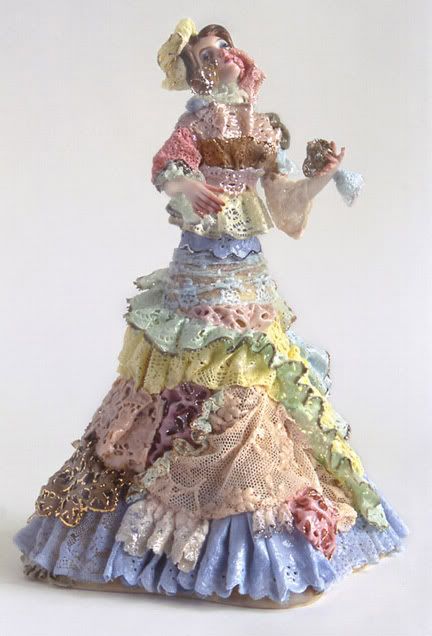 The process of draping porcelain lace is a fussy one. One begins by saturating lace in liquid porcelain, ensuring that all of the fibres of the material are permeated. The Green ware [1] is then carefully assembled and the saturated lace draped atop the figure, shaping and gathering it in intricate folds. The figurine is placed in a kiln and the lace is flash-fired, leaving only a skeleton of porcelain in the shape of whatever material it has saturated. In Shary’s words, “what you end up looking at is the history or the ghost of the fabric that used to be there but doesn’t exist anymore”.
The process of draping porcelain lace is a fussy one. One begins by saturating lace in liquid porcelain, ensuring that all of the fibres of the material are permeated. The Green ware [1] is then carefully assembled and the saturated lace draped atop the figure, shaping and gathering it in intricate folds. The figurine is placed in a kiln and the lace is flash-fired, leaving only a skeleton of porcelain in the shape of whatever material it has saturated. In Shary’s words, “what you end up looking at is the history or the ghost of the fabric that used to be there but doesn’t exist anymore”.Shary’s sculptures are a departure from the traditional figurines in that she alters the Green ware itself, breaking the arms, reconfiguring them and adding extra ones, removing fingers, and so on. Faces are painted with porcelain slip [2] to build up certain areas in order to alter their expressions. Her approach is distinct from that of most porcelain hobbyists, who tend to be quite concerned with making historically accurate reproductions of the German figurines.
xxxSubversion in porcelainxxx
Beyond relying on their materials and expertise, Shary has found her social engagement with communities of older female hobbyists to be a vital aspect of her project. Many regular attendees of classes and workshops are grandmothers or retirees whose husbands are not around much. They gather together for workshops (many practically free) to build skills, but also because it “fills a social and emotional need for them. They need a community and a space to be creative”.
Internal conflicts have arisen for Shary when working on particularly suggestive figures within this social context. Pointing to a piece where a series of female heads arc from a prone figurine’s neck to her nether regions, she explains: "This one has this really erotic implication and it's awkward for me because I really want to make the work exactly I want to make and I don't want to have to compromise for their sensibilities. I just keep it always steered away from the explicit. I keep the very personal reasons why I'm making it private.”
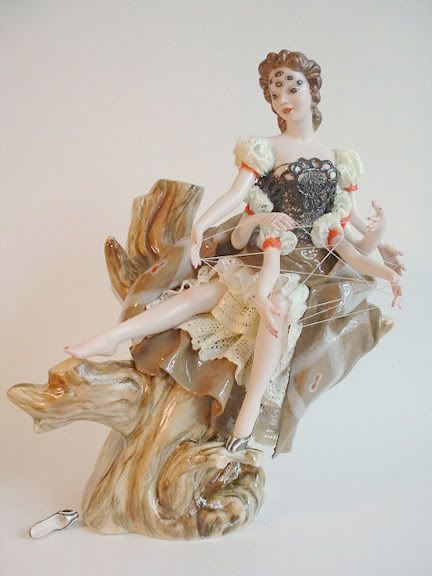 This is not to say that the political nature of her figurines completely escapes her classmates. Shary has been quite moved by the ways in which some of the women are affected by her work: "It's a very indirect manner of getting them to open up and think about the maybe feminist themes, without criticizing the ways of being of their generation, or their ways of coping. If you don't force them, they just start to come to it naturally. They are always trying to analyze [my work]. They want to know – 'What does that mean !?'.”
This is not to say that the political nature of her figurines completely escapes her classmates. Shary has been quite moved by the ways in which some of the women are affected by her work: "It's a very indirect manner of getting them to open up and think about the maybe feminist themes, without criticizing the ways of being of their generation, or their ways of coping. If you don't force them, they just start to come to it naturally. They are always trying to analyze [my work]. They want to know – 'What does that mean !?'.”One woman was particularly fascinated by a figurine with multiple arms forming a string figure through her many fingers (pictured at left). In her mind this represented the fact that a woman has to have many arms in order to juggle all of her responsibilities, like having a job, raising her children, cleaning her house, and so on. Shary sees this type of reaction as “this whole feminist – I don't know if it's an awakening, but she's getting it, she has her own relationship to it, she's going through the vehicle of this craft and this image to try to open her ideas on it and it's really cool. I just let her go, because it's not exactly what I'm thinking, but it's as valid and awesome and for her to see her own life and have it expressed.”
xxxFor the love of the craftxxx
Though Shary has developed relationships of mutual affection and support with these women, because her work addresses challenging themes through a medium that the hobbyists hold dear, building these relationships has required some sensitivity on her part. She explains: "It has been a social juggling act [for me] because I'm really interested in these people but I'm also taking the form that they've been working with… and in a way appropriating or altering it into a direction that is often pretty confrontational…What it comes down to is that there is violence, there are things that are very sexual, there is stuff that is disturbing content for that very conventional arena.”
Shary has found that focusing on building a relationship first - on being warm and courteous rather than aggressive in expressing her demands or ideas - is key to forming trust. “I let them know that I'm very respectful of their practice and their skill, and the community that they've set up, and I come in and start to watch and learn from them – because really – they're the technical geniuses in the field… Very few younger people are interested in carrying their stuff on, so immediately their curiosity is piqued… And they trust me enough - in a way they treat me like their adolescent kid who's dyed their hair purple…and I just nurture that because it's an easy way for us to exchange and for it to be non-threatening."
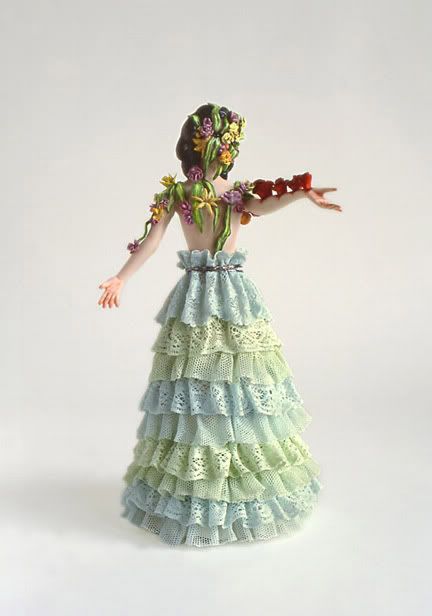
Humour plays a huge role in introducing her stylistic subversions to a group. She’ll teasingly ask them, “Isn't this a little crazy?” while putting on a head backwards in order to warm them up to her ideas. At first her stuff is so outrageous to them that it becomes the topic of gossip within these communities. Upon returning to the workshop she may hear about how ‘so and so had this to say’ about a certain sculpture. She has found that despite any initial reservations, her colleagues inevitably come around to being really excited about work. In fact her Burlington-based lace-draping mentor has assisted her on a labour intensive piece and will be in attendance at her opening reception.
For the most part, she and the porcelain hobbyists bond over the material things such as their vast collections of antique lace (swoon), or an expertly executed draping. They care about the form above all. “So we're just hanging out together doing this thing that we're stoked about.”
Catch Shary Boyle’s Lace Figures at The Power Plant (231 Queens Quay West) From March 25-May 28, 2006). Opening reception Friday March 31st from 7-10pm.
[1] Green ware: unfired, moulded porcelain such as the arms or head of a figurine
[2] Slip: a liquid clay formulation that fires to a fine translucent finish
